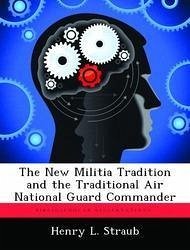Democracy triumphed over communism in the Cold War. Now in the 1990's, America, true to her militia tradition, is de-mobilizing. Since 1989, the active-duty force has shrunk by one-third. Yet, 30,000 to 80,000 service members deploy weekly in support of approximately one half-dozen operations scattered around the globe. This smaller military repeatedly does more with less. What keeps the current operations tempo (optempo) from reaching a state of critical mass? The inclusion of the reserve forces in exercises and deployments. In particular, the Air National Guard has supported the active Air Force in every major deployment and operation since Desert Shield/Storm. The Total Force Policy goal of "seamless integration" is close to realization. But, what is the price? Reservists have also experienced the detrimental effects of optempo. Long tours of duty and short-notice deployments interrupt family life and cause disruptions in the civilian workplace. Can the traditional Air National Guard commander, a citizen-soldier, handle the increasing burdens and problems of leadership in a militia organization? Is the part-time commander relevant today as the identities of the Air Force regular and air reservist begin to blend? What does the 21st century hold for the air reserve components?








